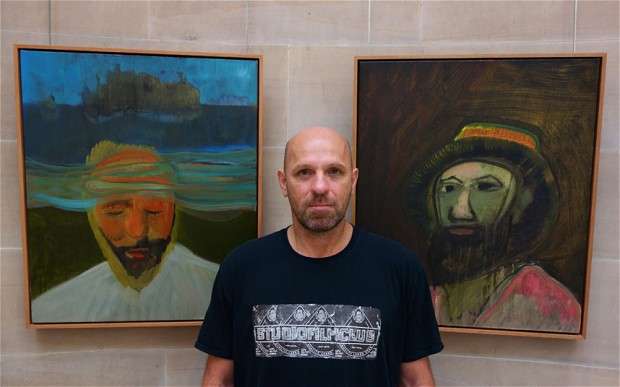Even with the advent of film, photography, and digital imagery, painting remains a vital and powerful art form, a fact I was reminded of when I visited Peter Doig’s exhibition No Foreign Lands at Montreal’s Musée des beaux-arts last weekend. Doig’s art immediately recalls the legendary Canadian Group of Seven, but his influences also include great pioneers of Modernism such as Edvard Munch, Paul Gauguin, Henri Matisse, and Pierre Bonnard.
Moving about the hardwood floors of the museum, I immediately noticed the scale of Doig’s paintings, and how his use of rich, bright colour stood out with warmth against the vast white walls; his paintings appear as if they were meant for display in a grandiose museum setting.
Author David Byrne writes how musicians and artists, “work backwards, either consciously or unconsciously, creating work that fits the venue available.” Byrne essentially thinks the space, the platform, and the software makes the art. This is exemplified in Doig’s work, as a tangible joie de vivre leaps from his smaller studio film posters, while larger displays remove any sense of reality. Doig propels the viewer to enter a dreamlike, theatrical scene like the ones depicted in Grande Riviere (2002) and Gasthofsur Muldentalsperre (2002).
Doig’s series of paintings of oil on paper, recognizable for stylistic simplicity, are intentionally displayed close together in a corner of the gallery. One feels a childlike spark from each of these paintings, which evolved organically as posters for weekly repertory cinema showings run by Doig and Che Lovelace, a Trinidadian artist. Doig makes a poster for nearly every one of the screenings, shown from his studio in the Caribbean Contemporary Arts cultural center located in a former rum distillery in Trinidad.
Doig was born in Edinburgh, Scotland in 1959 but moved to Trinidad with his parents when he was a child. Another move led Doig to grow into adulthood in Montreal. He attended art school in London and painted during the days throughout his twenties by working odd jobs in nightclubs. He has remarked on remaining independent of the trends of his peers when contemporary artists feared sharing gallery space.
“I never understood what was so conceptual about Conceptual Art anyway—all painting, pretty much, is conceptual,” says Doig in his book, which shares the same name as his current exhibit. “I mean every painting is an idea. Every painting is a result of process.” To Doig, conceptual art just removes the “pleasures” of looking. Since his success, he has returned permanently to Trinidad and also works and teaches in both London and New York.
“There are no foreign lands. It is the traveller only who is foreign.” These words from Robert Louis Stevenson are visible upon arrival to the exhibit, and carry the viewer through the scenes of Doig’s present life in Trinidad, while also weaving the memory of his Canadian home. This is exemplified through Doig’s work, 100 Years Ago (2001), where a man, seemingly adrift in a canoe in the ocean, reveals a backdrop of Carrera, the prison island off the coast of Trinidad. The subject looks to the viewer, as if asking whether a painter can free himself from pictorial memory in his apprehension of the real. Doig begun this work in Europe and finished shortly after his arrival in Port of Spain, Trinidad.
His working method draws on an ever increasing archival collection of personal photographs, as the book describes.
“I use photography simply as a way of imaging memory,” he writes. “The photograph acts as a starting point. It is in the actual act of making a painting that invention takes over.” Doig is noted for how he constantly reprocesses and transforms original images in painting sketches into a mythical, spiritual abstraction of reality. His process is visible throughout the exhibition, even as he admits, an “artist is only ever capable of painting one painting, again and again, in a single lifetime.”
Painting, in effect, is an artist’s own life, and through this exhibit you have the chance to glimpse into the vision of Doig’s own experience.
No Foreign Lands runs until May 4 at Musee des beaux-arts de Montreal (1380 Rue Sherbrooke Ouest). Tickets are $10.44 plus taxes and fees.








